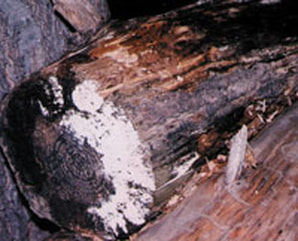Mold Remediation
Why is mold growing in my home or place of Business?
Mold is part of the natural environment.
Outdoors, mold plays a part in nature by breaking down dead organic matter such as fallen leaves and dead trees, but indoors, mold growth should be avoided.
Mold reproduce by means of tiny spores; the spores are invisible to the naked eye and float through outdoor and indoor air.
Mold may begin growing indoors when mold spores land on surfaces that are wet.
There are many types of mold, and none of them will grow without water or moisture.
Mold is part of the natural environment.
Outdoors, mold plays a part in nature by breaking down dead organic matter such as fallen leaves and dead trees, but indoors, mold growth should be avoided.
Mold reproduce by means of tiny spores; the spores are invisible to the naked eye and float through outdoor and indoor air.
Mold may begin growing indoors when mold spores land on surfaces that are wet.
There are many types of mold, and none of them will grow without water or moisture.
Can mold cause health problems?
Mold is usually not a problem indoors, unless mold spores land on a wet or damp spot and begin growing.
Mold has the potential to cause health problems.
Mold produces allergens (substances that can cause allergic reactions), irritants, and in some cases, potentially toxic substances (mycotoxins).
Inhaling or touching mold or mold spores may cause allergic reactions in sensitive individuals.
Allergic responses include hay fever-type symptoms, such as sneezing, runny nose, red eyes, and skin rash (dermatitis).
Allergic reactions to mold are common. They can be immediate or delayed.
Mold can also cause asthma attacks in people with asthma who are allergic to mold.
In addition, mold exposure can irritate the eyes, skin, nose, throat, and lungs of both mold-allergic and non-allergic people.
Symptoms other than the allergic and irritant types are not commonly reported as a result of inhaling mold.
Research on mold and health effects is ongoing.
Atkins General Construction can remove mold & clean areas to prevent any return of mold & spores.
Some mold spores will be found floating through the air and in house dust.
The mold spores will not grow if moisture is not present.
Indoor mold growth can and should be prevented or controlled by controlling moisture indoors.
If there is mold growth in your home or place of Business, the mold must be cleaned up properly and the water-problem must be resolved.
If the mold is cleaned up, but the problem causing it does not get repaired and fully resolved, then, in almost all cases, the mold problem is extremely likely to return.
Mold is usually not a problem indoors, unless mold spores land on a wet or damp spot and begin growing.
Mold has the potential to cause health problems.
Mold produces allergens (substances that can cause allergic reactions), irritants, and in some cases, potentially toxic substances (mycotoxins).
Inhaling or touching mold or mold spores may cause allergic reactions in sensitive individuals.
Allergic responses include hay fever-type symptoms, such as sneezing, runny nose, red eyes, and skin rash (dermatitis).
Allergic reactions to mold are common. They can be immediate or delayed.
Mold can also cause asthma attacks in people with asthma who are allergic to mold.
In addition, mold exposure can irritate the eyes, skin, nose, throat, and lungs of both mold-allergic and non-allergic people.
Symptoms other than the allergic and irritant types are not commonly reported as a result of inhaling mold.
Research on mold and health effects is ongoing.
Atkins General Construction can remove mold & clean areas to prevent any return of mold & spores.
Some mold spores will be found floating through the air and in house dust.
The mold spores will not grow if moisture is not present.
Indoor mold growth can and should be prevented or controlled by controlling moisture indoors.
If there is mold growth in your home or place of Business, the mold must be cleaned up properly and the water-problem must be resolved.
If the mold is cleaned up, but the problem causing it does not get repaired and fully resolved, then, in almost all cases, the mold problem is extremely likely to return.
